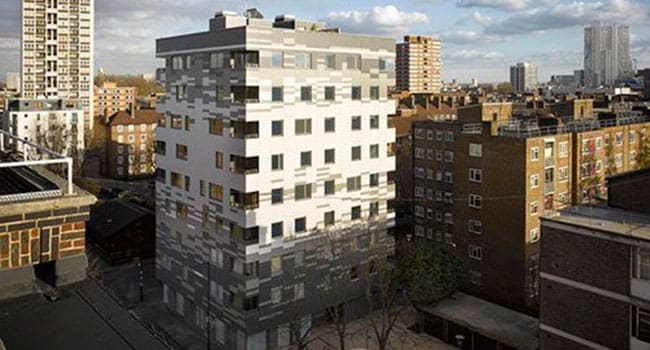 If a tree falls in the forest, can a tree-hugger cheer? Yes, believe it or not.
If a tree falls in the forest, can a tree-hugger cheer? Yes, believe it or not.
Felled trees can now replace concrete and steel in high-rise buildings, saving their weight in carbon emissions. Engineers and environmentalists are both rightfully excited by the new innovation in building high-rises. Unfortunately, a recent competition south of the border shows that governments are as likely to offer red tape as they are to roll out the red carpet.
In 2015, the U.S. Department of Agriculture (USDA) awarded a combined $3 million to two winners in its Tall Wood Building Prize Competition. The goal was to get the winners past the design stage – and municipal building codes – to build America’s first “plyscrapers,” which are high-rise buildings made of cross-laminated timber. Also known as mass timber, these modular sheets are glued or pinned together in layers. They’re stronger than concrete and resist earthquakes and even fire, charring instead of burning like typical lumber.
The USDA saw potential not just for the sale of American softwood lumber but for the environment. The agency estimates every four storeys of a mass timber building saves the same amount of carbon emissions as 500 cars create a year.
Typically, tall buildings are made of concrete, a material that requires almost its weight in carbon emissions to produce. By contrast, trees take in carbon to grow. A plyscraper will store the carbon as long as it stands, and after demolition the wood can be recycled and burned for fuel. Thus, the building will act as massive carbon sinks for as long as they stand.
Sadly, only one of the winning proposals will be built: the 12-storey Framework apartment building in Portland, Ore. Although the building won’t be finished until 2018, the structure has already been welcomed by the mayor as “a true technological and entrepreneurial achievement.”
The other winner, who proposed to build a 10-storey condo in Manhattan, has scrapped the project. New York City wouldn’t allow a wood building higher than six storeys.
Consequently, Portland will have America’s only plyscraper for years to come because national building codes aren’t expected to allow this design to be used until at least 2021.
Will Canadian cites do better?
Vancouver has, largely because it boasts the engineering firm most responsible for the plyscraper movement. Michael Green wrote the seminal book The Case for Tall Wood Buildings in 2012 and did a popular Ted Talk on the subject in 2013. His home city boasts two of the tallest wood structures in the world: the 18-storey Brock Commons residence at the University of British Columbia and the 19-storey Terrace House.
As it was with the first skyscrapers built in the late 1800s, Green expects higher plyscrapers to be built in the years to come. Green is working on the 35-storey Baobab project in Paris and developers have proposed an 80-storey building for London.
Engineering principles, market forces and environmental arguments all favour the plyscraper movement. The government, not the sky, is the limit.
If New York City with all its skyscrapers won’t allow any to be constructed of wood, it’s entirely reasonable to think that neither will Toronto, Montreal or Calgary. What a loss that would be.
This is one instance where the government need not spend more money on a green solution. It just needs to get out of the way.
Lee Harding is a research associate with the think-tank Frontier Centre for Public Policy.
Lee is a Troy Media Thought Leader. Why aren’t you?
The views, opinions and positions expressed by columnists and contributors are the author’s alone. They do not inherently or expressly reflect the views, opinions and/or positions of our publication.

